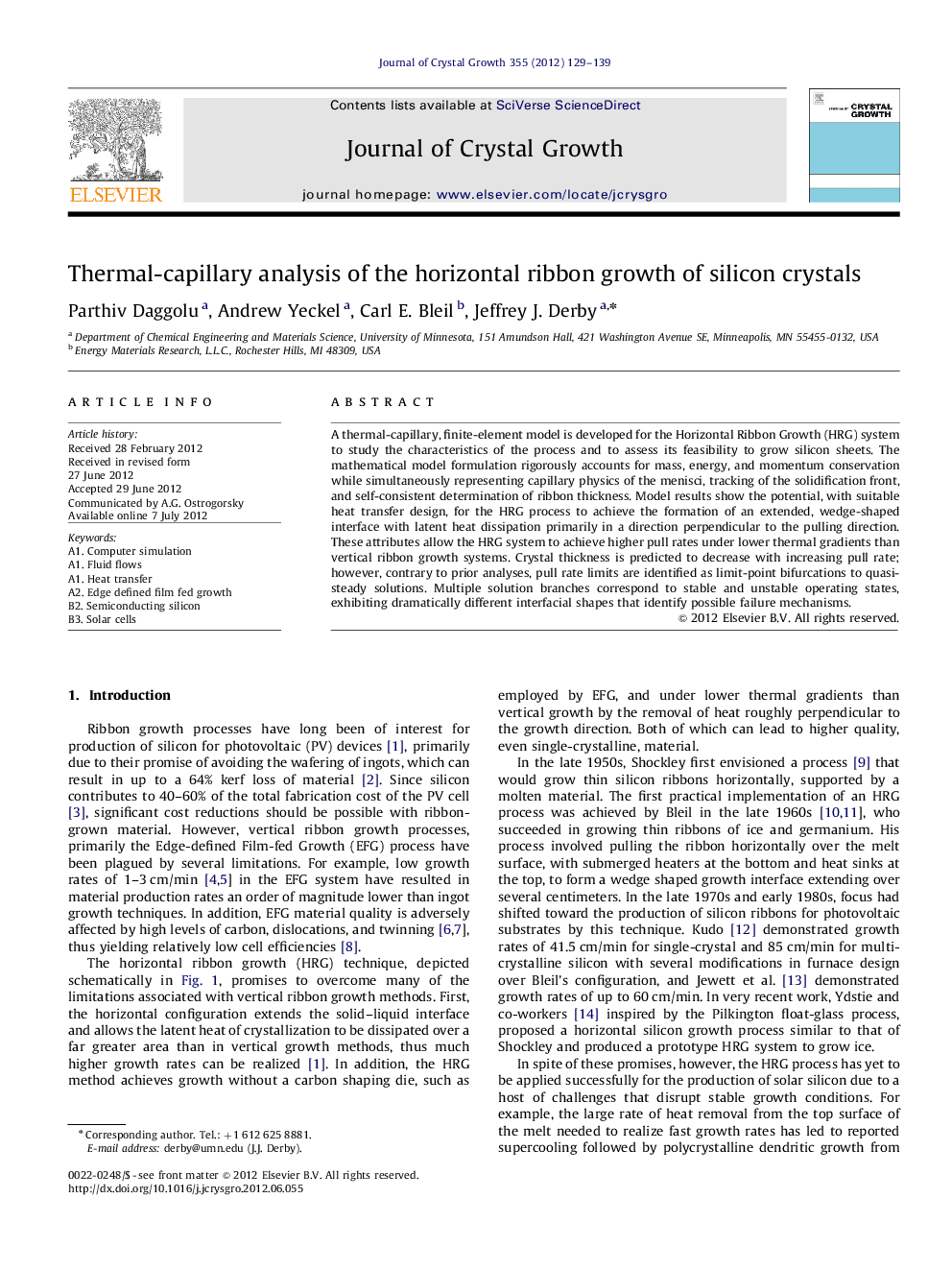| Article ID | Journal | Published Year | Pages | File Type |
|---|---|---|---|---|
| 1791685 | Journal of Crystal Growth | 2012 | 11 Pages |
A thermal-capillary, finite-element model is developed for the Horizontal Ribbon Growth (HRG) system to study the characteristics of the process and to assess its feasibility to grow silicon sheets. The mathematical model formulation rigorously accounts for mass, energy, and momentum conservation while simultaneously representing capillary physics of the menisci, tracking of the solidification front, and self-consistent determination of ribbon thickness. Model results show the potential, with suitable heat transfer design, for the HRG process to achieve the formation of an extended, wedge-shaped interface with latent heat dissipation primarily in a direction perpendicular to the pulling direction. These attributes allow the HRG system to achieve higher pull rates under lower thermal gradients than vertical ribbon growth systems. Crystal thickness is predicted to decrease with increasing pull rate; however, contrary to prior analyses, pull rate limits are identified as limit-point bifurcations to quasi-steady solutions. Multiple solution branches correspond to stable and unstable operating states, exhibiting dramatically different interfacial shapes that identify possible failure mechanisms.
► A thermal-capillary model is developed for the horizontal ribbon growth (HRG) system. ► Deeper understanding of heat transfer, growth rate, and ribbon thickness is obtained. ► Growth limits and process instabilities are predicted for silicon ribbons.
